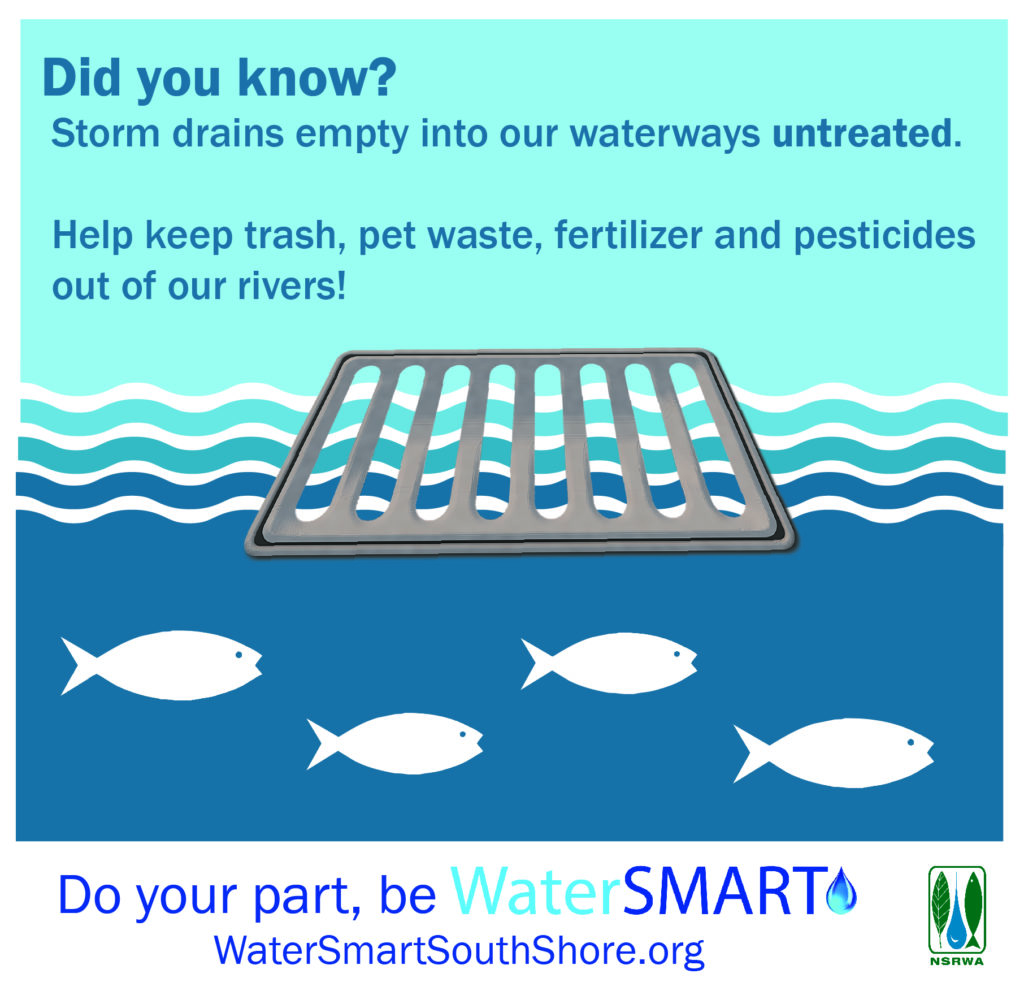
More Than Rain in the Storm Drain
Storm drains can be found all over the United States, often prevalent in areas with high populations. Their intended purpose is to allow the excess flow of water from the streets, roofs, and sidewalks to escape and prevent potential flooding. Unfortunately, more than just excess water makes its way down the drain.
Contaminants such as trash, pet waste, fertilizer and pesticides are some of the most toxic contaminants that enter storm drains. Fertilizers, while helping to keep a lawn looking green, get washed down the street where they enter the storm drain channels and enter the local waterways. The fertilizer then causes an algae bloom that kills off other life by absorbing most of the oxygen available. Pet waste acts in the same manner with the added harm of parasites.
As the public becomes more engaged and interested in keeping our waterways clean, we strive for safe water on the South Shore.
What can you do to help?
- Pick up pet waste and put it in a trash can
- Pick up trash before it washes into the storm drain
- Don’t dump leaves or yard debris into the drain
- Eliminate chemical pesticides and fertilizers
- Don’t dump dirty water or oil into storm drains
Help us keep our water safe and clean for boating, fishing and swimming, as well as for the wildlife that call our waters home.
The WaterSmart Program is a partnership with the NSRWA and 11 towns on the South Shore; Aquarion (Hingham and Hull), Duxbury, Hanover, Hingham, Kingston, Marshfield, Norwell, Pembroke, Rockland, Scituate and Weymouth, which provides education to school children and adults on stormwater and water conservation in their homes, businesses and towns.
For more information about WaterSmart, contact the program manager, Lori Wolfe, at lori@nsrwa.org or (781) 659-8168.
